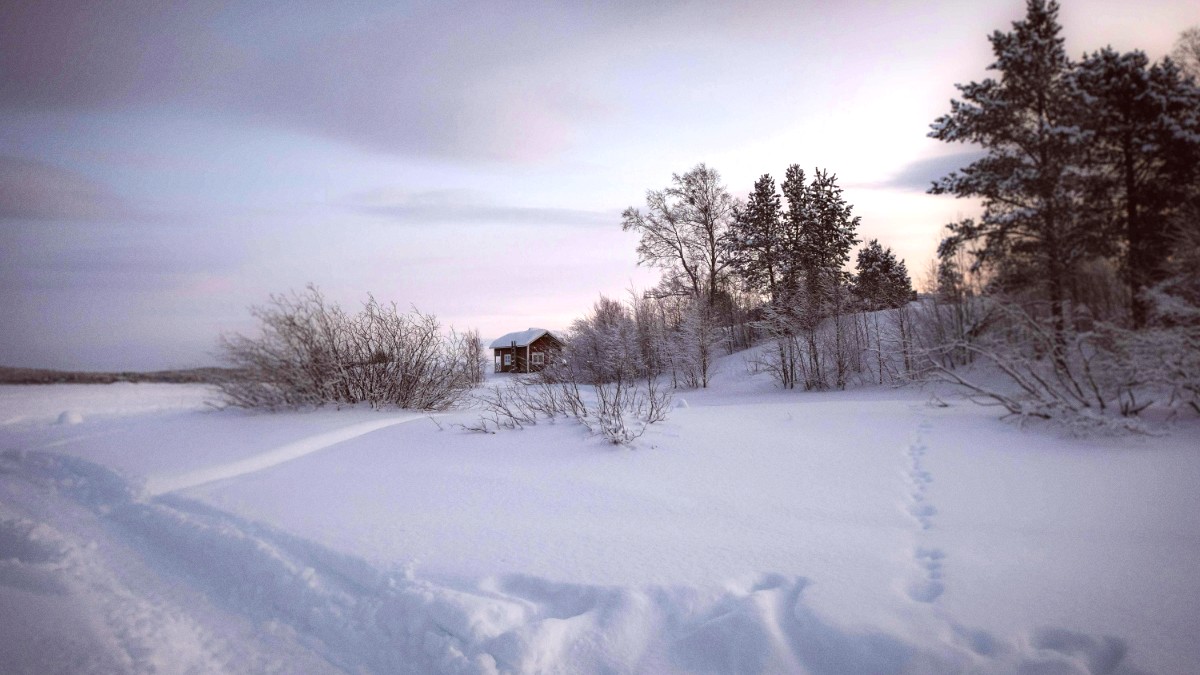
Lapland, Finland
Certain sites in Inari offer cultural and natural significance. These locations provide comprehensive insights into Sámi culture, history, language, and the nature of the region.
They feature both indoor and outdoor exhibitions, allowing for a deep understanding of Sámi traditions and Arctic life.
Consider a boat trip in summer or a snowmobile/ice fishing tour on the ice in winter for unique perspectives of Lake Inari.
One of Finland's oldest surviving wooden churches, built in 1760. Located 10 km from Inari village, accessible by a 3 km hike or snowmobile trail in winter.
A sacred site for the Inari Sámi, historically used for sacrificial offerings. This island sits in Lake Inari, accessible by boat tour in summer.
Hosts concerts, traditional yoik performances, conferences, and exhibitions related to Sámi culture.
The history of gold panning in nearby Lemmenjoki National Park receives coverage at Siida.
Both Siida and Sajos regularly update their temporary exhibitions and offer special programs, workshops, and events, especially during Sámi National Day (February 6th).
Inari's main allure lies in its spectacular natural environment, inviting exploration and admiration.
View this famous natural phenomenon best on clear, dark nights away from light pollution.
Experience 24 hours of daylight in summer, perfect for late-night activities.
Experience the unique blue light and short twilight days in mid-winter.
The wilderness hosts reindeer, moose, various bird species, and occasionally larger predators.
Ideal for boating, fishing, and kayaking in summer. In winter, it turns into a frozen playground.
A moderate hike to the top provides panoramic views over Lake Inari and the surrounding fells.
Lemmenjoki National Park, one of Finland's largest, offers vast wilderness, the Lemmenjoki River, and a history of gold panning. Urho Kekkonen National Park is also nearby.
Inari features fells (low mountains) and vast taiga forests, shaped by glacial activity. The massive Lake Inari itself represents a prominent geological feature.
Drive on roads around Lake Inari, like those towards Nellim or Karigasniemi, for various scenic spots. A hike to Otsamo fell offers panoramic views of the lake.
Capture the Arctic's magic. Sunrises, sunsets, and Northern Lights reflections can be stunning.
Venture beyond the well-known sites to uncover Inari's special, less-traveled spots.
These locations offer a , more intimate connection with the region's nature and culture.
Discover unique attractions often overlooked by casual tourists.
Connect with authentic local experiences rarely visited by tourists.
Capture breathtaking and distinctive Arctic moments.
Always inform someone of your route and expected return time when venturing into wilderness areas.
Inari's allure stems from its raw, untouched nature and deep cultural roots.
The vast wilderness and pristine landscapes offer tranquility and stunning visual appeal.
Inari is a hub for Sámi culture, language, and self-governance.
Opportunities for genuine interactions with Sámi people and traditional lifestyles.
Consider a multi-day hike in Lemmenjoki National Park for nature immersion.
Lemmenjoki ParkSample traditional Lappish dishes at local restaurants.
Plan your visit effectively with these considerations.
Staying connected in the Arctic region.
Embrace the tranquility and the powerful Arctic spirit during your visit to Inari.
Allow yourself to truly disconnect and connect with the unique surroundings.
Your visit helps preserve Inari's natural environment and cultural heritage. Engage thoughtfully.
Their heritage is rich and living.
The Arctic environment is fragile. Your actions have an impact.
Your financial choices can directly strengthen the community.
This helps sustain traditional livelihoods and local businesses.
Small actions collectively preserve the destination for future generations.
Prioritize your well-being and security in the Arctic.
Your thoughtful presence aids the preservation of Inari's unique charm.
A respectful visit creates lasting memories for you and the local community.
Responsible tourism helps keep Inari special for generations to come.